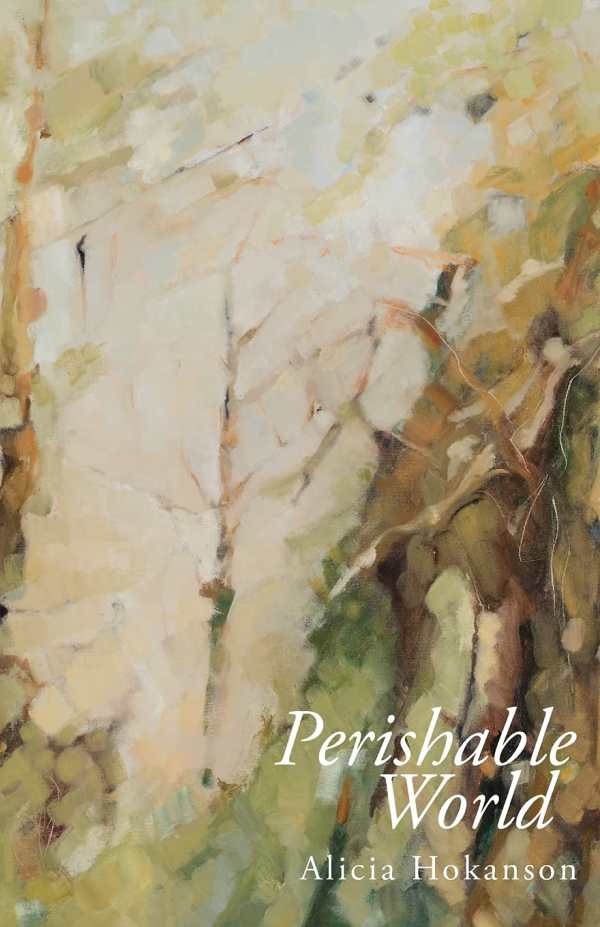It looks like you've stumbled upon a page meant to be read by our code instead of viewed directly. You're probably looking for this page.
Perishable World
Perishable World is poetry in its most lyrical form, blending the rhythms of human life and nature.
Grief shows up in unexpected places in the poems of Alicia Hokanson’s Perishable World.
These poems weave words into pictures, patterns, sounds, and emotions. The collection is organized into four parts, each with an opening quote that hints at the section’s contents. With wonder and deep appreciation, the collection starts as an homage to the natural beauty of the Pacific Northwest, and to the particular joys of living on an island, surrounded by forests on one side and water on the other. Then grief begins to seep through the gaps in the canopy: for the environment, for the state of the world, and for lost loved ones.
Holding disparate realities in the same poem is a recurring act. The beauty and majesty of the natural world is pressed up against the destructive interference of humanity. In “Side by Side,” innocuous observations of animals at the edge of the water on a summer morning are the bread in a social commentary sandwich. Two stanzas in the middle of the nine-stanza piece observe the stain of police brutality and the plight of refugees. “Letters from the Island,” a diary-esque entry, starts with an appreciation for living on a forested island, close and in tune with nature, before turning to lament the influx of loggers with their equipment “Like giant hornets in the distance.” It ends with an understanding that sustainability and environmental activism is necessary, but just as necessary is taking a pause to appreciate spending time with family.
Colors play a significant role, too, rendering photographs of the blood red skies of fire season and the calming peach and blue tones of sunset on the water. The presence or absence of color in a poem also helps to achieve the mood and tone of the piece. Wonder suffuses the poems with the most named colors, and with those that are specific to nature, without commentary on anything else. Monochrome palettes take over in the poems that explore the death of loved ones. “Blue Bardo Suite,” a movement in four poems and one of the longest pieces in the collection, explores the last months, weeks, and moments of a dying mother and paints them in the grey, washed-out tones of a rainstorm.
Whether told in lines that flow or that come in staccato form, each poem carves a place in the overall story of the collection. “PechaKucha for Michael” uses both techniques to create the story of a relationship brought to its end by death. This is reflected even in the style of the poem: a pechakucha is a twenty-section presentation form, but this piece finishes with only fifteen sections. Grief spills out across the page in format, in style, and in tension, lingering in memories shared and brought up in quiet ritual moments.
Moving and atmospheric, the collection basks in ebbs and flows, questioning whether mourning ends, but also finding joy in small moments. Perishable World is poetry in its most lyrical form, blending the rhythms of human life and nature.
Reviewed by
Dontaná McPherson-Joseph
Disclosure: This article is not an endorsement, but a review. The publisher of this book provided free copies of the book and paid a small fee to have their book reviewed by a professional reviewer. Foreword Reviews and Clarion Reviews make no guarantee that the publisher will receive a positive review. Foreword Magazine, Inc. is disclosing this in accordance with the Federal Trade Commission’s 16 CFR, Part 255.
